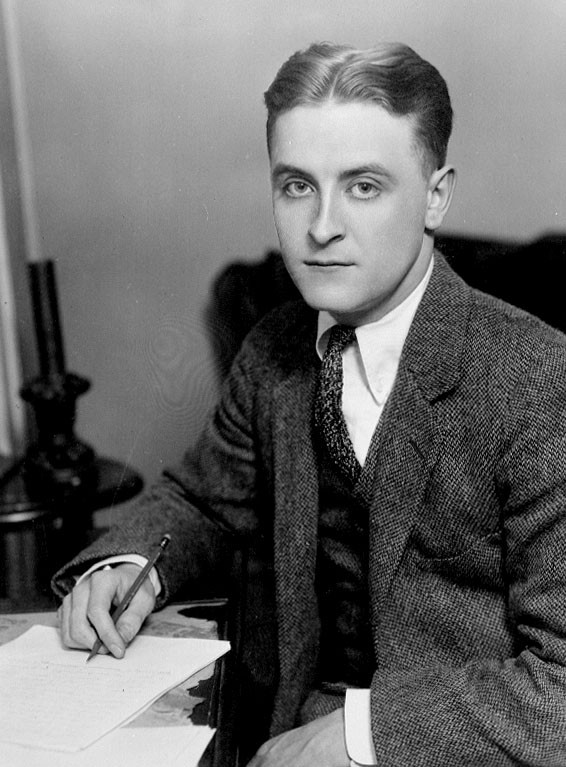Scott F Fitzgerald, American short story writer and novelist, is best known for his depiction of the ‘Jazz Age’ of the 1920s. His own reckless, excessive lifestyle came to symbolise the 'Roaring Twenties', characterised first by glitter and glamour, then by the decadence and destruction of self-indulgence,which he depicted in his novels and short stories. He, along with Ernest Hemingway and William Faulkner, is now known in critical circles as one of the “Big Three” American authors of the first half of the twentieth century. The American classic The Great Gatsby is the best known and most popular of Fitzgerald's works, Written in 1925, it is a criticism of the moral emptiness and corruption of wealthy American society during the Jazz Age.
With the
outbreak of the First World War Fitzgerald signed up for officers training, and
entered the United States army as a second lieutenant. In the army he continued
to pursue his literary aspirations. Convinced he would not live through the war
if he saw com bat, he hurriedly wrote his first novel, The Romantic Egotist. The
rejection letter from Charles Scribner's Sons praised the novel's originality
and encouraged him to revise his work.
When ‘This
Side of Paradise’ was published in 1920, the 24-year-old Fitzgerald became
famous overnight and got married. Sudden prosperity gave them the opportunity
to play roles in wealthy society. In 1920 This Side of Paradise captured the
post-war disillusionment of Fitzgerald's generation and revealed the new
morality of the young.
The Beautiful
and Damned (1921) chronicled the decline of a beautiful and privileged couple
into degeneration and damnation, foreshadowing the Fitzgeralds own downward
drift. Fearing a similar end, they escaped the chaos by moving to the French
Riviera in 1924. Shortly after their arrival, Fitzgerald finished his most
famous novel, The Great Gatsby (1925).
The last completed novel ‘Tender is the Night’ (1934), Fitzgerald's most ambitious novel, examines the deterioration of a brilliant American psychiatrist who marries one of his wealthy patients. Through fictional alter egos, the book portrays Zelda's breakdown and Fitzgerald's decline.
In 1937
Fitzgerald moved to Hollywood to work as a screenwriter for Metro-Goldwyn
Mayer. Sheila Graham, a famous gossip columnist, became his mistress. His
Hollywood experience inspired The Last Tycoon (1941), with its hero, Monroe
Stahr. based on the producer Irving Thalberg. The novel was Fitzgerald's last
attempt to depict his vision of the American Dream and a character who could
realise it. He died in 1940, aged 44, of a heart attack, with his novel only
half finished. His brief life is a tragic, eloquent symbol of the allure and
calamity of self-indulgence. Zelda Fitzgerald died in 1948 in Ashville, North
Carolina, in a fire at Highland Hospital.

No comments:
Post a Comment
looking forward your feedbacks in the comment box.